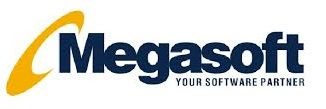
Exploring from one filing cabinet to another for locating your important documents actually drains finances and time as well as other resources from your company. Productive companies have the potential to realize the loopholes of manual storage of information and prefer to opt for document imaging software solutions to get the much-required information instantly without delay.
Why shall you implement document imaging software solutions in an organization?
Document imaging solutions not only have the ability to streamline the workflow but can even quickly gain access to the data you need. For better results, it’s suggested to opt for technology that provides the following benefits:
Text search
One of the main reasons that companies nowadays prefer to opt for document imaging software solutions is immediate access to important data. With the use of OCR, document imaging software offers users the ability to look for particular phrases and keywords inside a document. Plus, users can pinpoint text using this software through associated metadata and preconfigured searches.
Security
The most important factor is that all your data is completely protected. This kind of software can assist by applying features and authorized access rights like deleting, moving, and restoring particular folders or documents. These software solutions are compliant with key record-keeping standards, such as SEC and HIPAA. Hence, you can easily and quickly ensure that your documents are following federal regulations.
High volume capture
A robust Document imaging software allows you to access, store and modify documents according to need. Plus, search software solutions can enable users to import documents in the form of individual sheets or as a complete batch.
Annotations
The best part of using this document imaging software is the ability to not multiple documents. Moreover, annotation enables users to work together for modifying multiple documents in your company’s repository. A perfect document image software comes with a plethora of various annotation features like stamps, sticky notes, comment boxes, and text sections. Annotations can even be used in the form of bookmarks which makes it quite easier to find particular sections of a document.
4-step document imaging software—Let’s see how it works!
Step 1
Preparation of documents
For document imaging, documents need to be thoroughly scanned. But prayer to that it needs to be “prepped” or “prepared”. However, document preparation can be defined as one of the most overlook sections of document scanning.
Basically, scanners can handle similar size documents quite well but cannot handle a batch of documents that come in different sizes. The paper feed guides are required to keep papers in straight alignment while passing through the scanner.
Keeping this in mind, it’s better to go for similar size documents at a time to make the scanning process more efficient. In case you go for mixed-size documents for scanning, the scanner operator needs to stop the scanning process to frequently rescan for any crooked or skewed documents or resolve jams and misfeeds.
In simple words, it can be stated that document preparation is a crucial step for successful document imaging software solutions.
There are four questions that we need to answer about documents:
- What size of papers are you using?
- Is there any kind of sticky notes for your documents?
- Are there any staples or paper clips on the documents?
- Is there a uniform thickness for all the documents you are using?
Step 2
Scanning of documents
Once the documents are completely prepared, they are ready for scanning purposes. Document imaging is getting off information quickly from documents. Two things are required:
- Manual KFI or Key-Form-Image capability and
- OCR
The documents are properly scanned, as well as saved automatically by the software. The following step is automated, and Optical Character Recognition is used for converting the images scanned into usable text.
At this point, it is important to note down that a system without built-in OCR is not a document imaging solution.
OCR is preferably used in two ways:
- In the first process, it is helpful in finding snippets of text information on scanned documents. For example, in the case of invoice scanning, it’s common to search for the invoice date and number, invoice total as well as other fields.
It can be done in multiple ways. The final result is the key value pairings of information—where you can come across tags like invoice number as a keyword, followed by a corresponding data piece that is in quite a proximity to the tag—the actual invoice date.
- The other option of OCR is to develop a full-text conversation of the whole image. It can be used for creating searchable PDFs.
The best systems do not basically differentiate between zonal and full-text OCR. Basically, the OCR documents, are followed by text analyzing.
Step 3
Data validation
Once the text is created after completing the scanning process, it needs validation. This is the most time-consuming part of the entire document imaging process.
We know that OCR is not a perfect technology, and sometimes it gives you the wrong data. But the engine of OCR is convinced that the data providers are highly accurate. And most systems have no process for automatic correction of the wrong OCR. They entirely depend on the human key for fixing errors.
This is the data validation process preferred historically to the document imaging process, and it separates the older document imaging process from the intelligent document processing systems.
Step 4
Index data and export images
Once the data validation process is completed, you need to undergo the last step, which is exporting the pictures along with the corresponding index data.
You may come across articles related to document imaging software where document retrieval is mentioned as a part of a similar system……but it’s not the case.
Why am I saying this? It’s because there are document management systems that come with rudimentary scanning facilities built-in, but there are no document imaging software solutions available that provide document retrieval services. These software solutions add value to workflow, document management, and RPA solutions.

Leave a Reply